A banneton is a type of basket made of straw, bamboo or plastic that is used to proof bread dough before baking. A banneton helps shape and texture the bread, as well as creating beautiful ridges on the crust. However, to maintain the quality and hygiene of the banneton, you need to know how to clean it properly. In this article, we will guide you how to clean a banneton basket with simple and effective steps.
Let’s explore the best practices to keep your banneton basket in pristine condition for countless batches of delectable, home-baked bread.
Contents [hide]
1. How to clean banneton first use?
Banneton is a type of bread proofing basket with a cotton cloth lining inside to shape and support the sourdough. To use the banneton for the first time, it is essential to clean it carefully to remove dust and bacteria that could affect the quality of the bread.
Here are the steps to clean the banneton for the first use:
- Remove the cotton liner from the proofing basket and wash it with warm water and mild soap. Squeeze out excess water and air dry in the shade.
- Gently brush the proofing basket with a brush or a damp cloth to remove any dust. Avoid soaking the basket in water as it may cause the wood to lose moisture and warp.
- Allow both the proofing basket and the cotton cloth to completely dry before using. You can place them in the microwave or oven at a low temperature for a few minutes to sanitize and expedite the drying process.
- After cleaning, you can dust a layer of flour onto the proofing basket and the cotton cloth to create a non-stick surface for the sourdough. You can also add a few grains or spices to the flour layer to enhance the flavor of the bread.
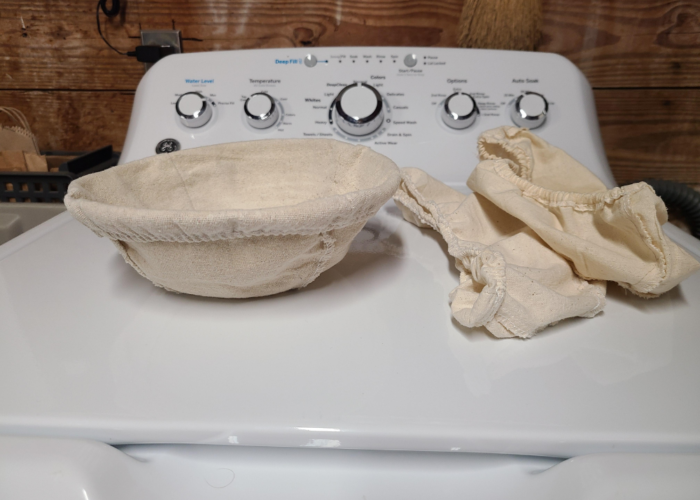
2. How to clean a banneton proofing basket?
Banneton is a type of bread proofing basket with a cotton cloth lining inside to maintain shape and create patterns on the dough. To clean the banneton, you should follow these steps:
- After baking, wait for the banneton to cool completely, then remove the cotton cloth and gently tap to remove any flour dust.
- If there are stains or mold, you can soak the cotton cloth in warm water with a little vinegar or oxygen bleach and wash it thoroughly.
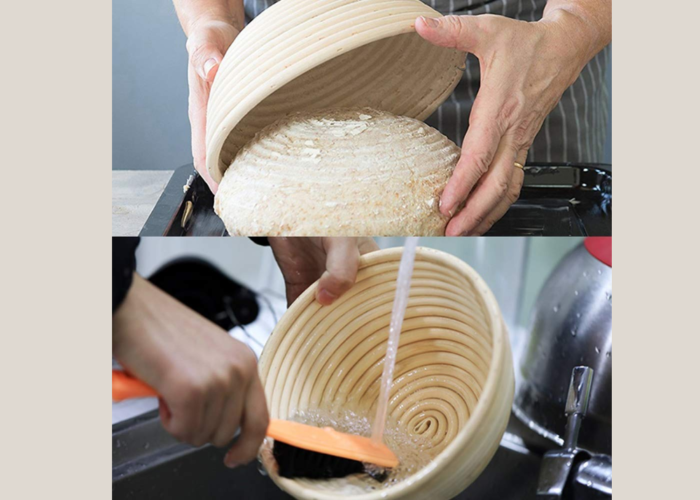
- Allow the cotton cloth to air-dry in a cool, shaded place, avoiding direct sunlight.
- Avoid washing the banneton with soap or cleaning agents as it may strip away the natural coating of the basket, affecting the quality of the bread.
- Use a brush or a dry cloth to wipe away any flour dust on the basket, then let the basket air-dry in a cool, well-ventilated area.
- If not used frequently, it’s advisable to wrap the basket and cotton cloth in a sealed plastic bag to prevent dust and insects.
This is a simple and effective way to clean the banneton. It is recommended to perform this cleaning routine at least once a week to ensure the basket remains clean and safe for your health.
3. How to wash banneton liner?
Banneton is a type of bread proofing basket with a lining of cotton or linen fabric. The fabric lining helps prevent the bread from sticking to the basket and creates beautiful patterns on the crust. To keep the fabric lining clean and dry, you should wash it regularly following these steps:
- After baking, wait for the fabric lining to cool completely before removing it from the basket.
- Using a small brush, gently scrub any dough residue on the fabric lining. Avoid using water to wet the fabric lining.
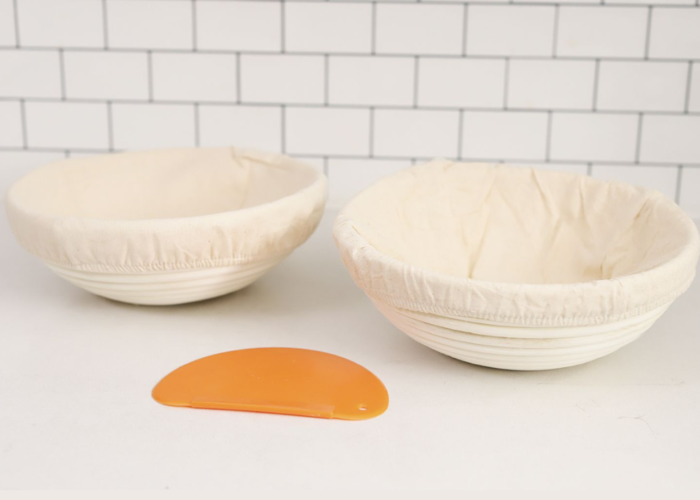
- If there are stains or mold on the fabric lining, you can soak it in warm water with a little white vinegar or oxygen bleach for about 15 minutes. Then, rinse thoroughly with cold water and gently squeeze out excess water.
- Air-dry the fabric lining in a cool, shaded area, avoiding direct sunlight. While drying, you should stretch the fabric lining taut to prevent wrinkles.
- Store the fabric lining in a sealed plastic bag or a lidded container when not in use.
By washing the banneton fabric lining correctly, you can extend its lifespan and ensure that your bread remains flavorful and visually appealing.
4. How to get rid of mold on banneton?
Banneton is a type of bread proofing basket made from straw, cane, or wood. It assists in the dough’s rising process and helps maintain its shape before baking. However, if not properly cleaned and stored, bannetons can also be susceptible to mold.
To eliminate mold on a banneton, you can follow these steps:
- Remove the banneton from any plastic or fabric bags it may be stored in.
- Use a brush or paper towel to clean off any dirt and mold on the surface of the banneton.
- Place the banneton in direct sunlight for at least 2 hours to sanitize and dry it.
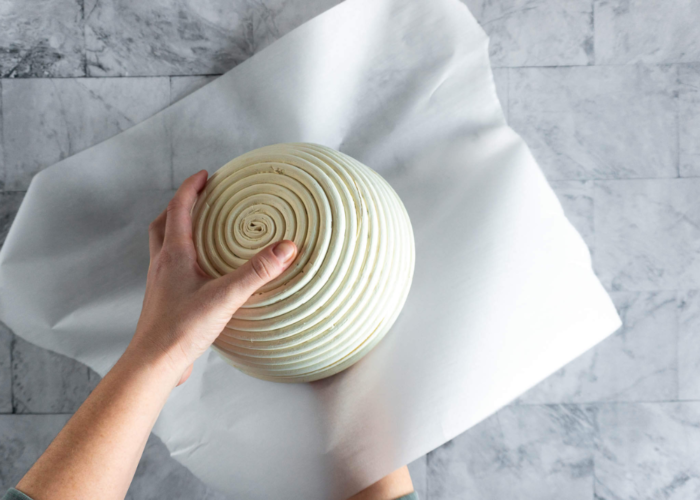
- If necessary, you can use a mixture of vinegar and water to lightly wipe the banneton, then let it air-dry completely.
- Store the banneton in a dry, well-ventilated area, and avoid exposure to dampness.
By regularly cleaning and caring for your banneton, you will preserve the quality of your bread and reduce the risk of contamination from mold.
5. How to care for a banneton basket?
Banneton is a type of basket made from straw or plastic, used to allow bread dough to rise before baking. Banneton aids in shaping and structuring the bread, creating beautiful patterns and a distinctive crust. To care for a banneton, you should follow these steps:
- After use, use a small brush to sweep away any stuck-on flour from the basket. Avoid washing the basket with water, as it can lead to mold and damage the basket.
- If the basket shows signs of dampness, you can place it in direct sunlight or in a low-temperature oven for a few minutes to dry it out.
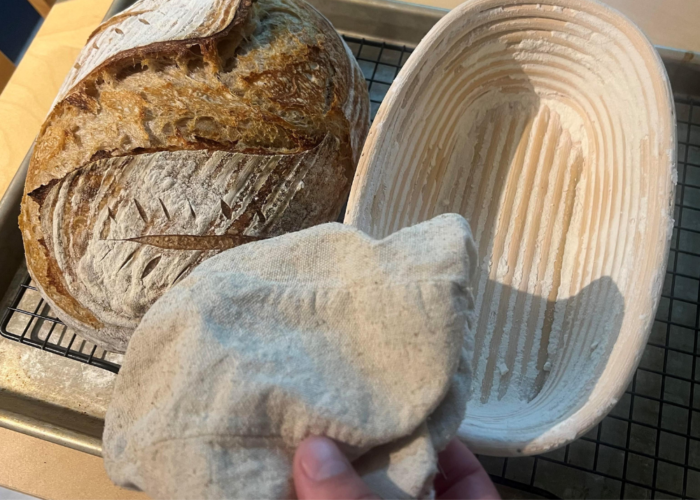
- If there’s an unpleasant odor, sprinkle a small amount of flour in the basket and let it sit overnight. Then, brush off the excess flour and wash the basket with warm water mixed with a little white vinegar. Squeeze the basket to dry and let it air out as mentioned above.
- If there is mold on the basket, scrape off the visible mold and soak the basket in warm water with a bit of oxygen bleach. Afterward, squeeze the basket to dry and let it air out as mentioned above.
- It’s advisable to store the banneton in a sealed plastic bag or a tightly covered box to prevent dust and insects.
By following these steps, you can maintain and care for your banneton, ensuring it remains in good condition and contributes to the quality and appearance of your bread.
6. FAQs
6.1 How often do you clean banneton?
The frequency of cleaning a banneton depends on how often it is used and the specific care instructions provided by the manufacturer. However, as a general guideline, it is recommended to clean the banneton after each use.
After baking, remove any excess flour or dough residue using a small brush, and let the banneton air out to ensure it stays dry and free from any potential moisture-related issues. Additionally, occasional deep cleaning or more thorough maintenance, such as addressing mold or odors, can be performed as needed.
Always refer to the specific care instructions provided by the manufacturer for the best practices tailored to your banneton.
6.2 Why does sourdough stick to banneton?
Sourdough may stick to a banneton due to insufficient flour dusting, high hydration levels, inadequate proofing time, or over-proofing. Properly coating the banneton with a mix of rice and wheat flour, adjusting hydration levels, ensuring adequate proofing, and avoiding over-proofing are crucial measures.
Additionally, the choice and quality of flour impact dough consistency, and experimenting with different types can mitigate stickiness. Regularly maintaining and seasoning the banneton contribute to a non-stick surface, ensuring the smooth release of the dough.
By addressing these factors, bakers can enhance their chances of achieving well-shaped and easily released sourdough from the banneton.
6.3 Why use a liner in a banneton?
One reason to use a liner in a banneton is to prevent the dough from sticking to the proofing basket. A liner can make it easier to remove the bread from the banneton without compromising its shape. Additionally, a liner can help the bread retain moisture and create a crispy crust.
You can use different types of fabric as liners, such as cotton, linen, or canvas. It’s advisable to choose a fabric that is lint-free and has good water-absorbing properties. Cleaning and air-drying the liner after each use is also recommended to avoid bacteria and mold growth.
6.4 What is the best flour to dust bannetons with?
The best flour to use for dusting bannetons is typically rice flour or a combination of rice flour and all-purpose or bread flour. Rice flour is favored due to its lower gluten content compared to wheat flour, helping to prevent the dough from sticking to the banneton.
Its fine texture contributes to creating a smooth and non-stick surface, facilitating the easy release of the dough. Many bakers also opt for a blend of all-purpose flour with rice flour to strike a balance between preventing sticking and providing an even coating. Some variations may include the use of cornstarch in the flour mixture.
7. Final thought
Maintaining a clean and well-cared-for banneton basket is a small but crucial aspect of the artisanal bread-baking process. By following the simple steps outlined in this guide, you can ensure that your banneton remains an effective tool for shaping and proving dough, contributing to the success of your homemade bread.
Regular cleaning not only preserves the integrity of the basket but also promotes a hygienic environment for your dough to rise and develop its unique characteristics.
Remember, a well-maintained banneton basket is not just a practical necessity; it is a testament to your commitment to the art of baking. Happy baking!
If you have any further questions, don’t hesitate to send thanhcongcraft an email us at info@thanhcongcraft.com or message us at WhatsApp: +84967485411. Hope to serve you soon! Best regard!


